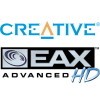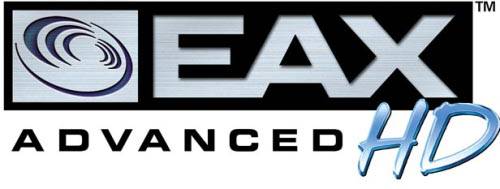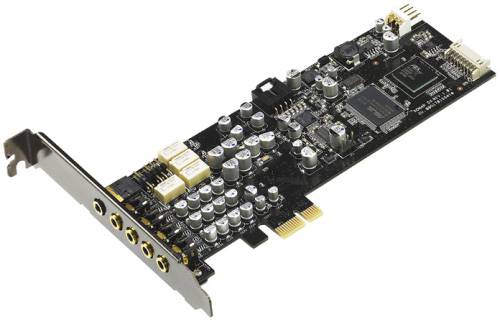- Qualcomm Launches Snapdragon 4 Gen 2 Mobile Platform
- AMD Launches Ryzen PRO 7000 Series Mobile & Desktop Platform
- Intel Launches Sleek Single-Slot Arc Pro A60 Workstation Graphics Card
- NVIDIA Announces Latest Ada Lovelace Additions: GeForce RTX 4060 Ti & RTX 4060
- Maxon Redshift With AMD Radeon GPU Rendering Support Now Available
Creative EAX vs. ASUS DS3D GX 2.0

Not long ago, we received word from ASUS that they had managed to incorporate EAX effects into the drivers of their Xonar cards. Soon afterward, Creative told everyone that was false, and that ASUS “EAX” was not true EAX. Who’s telling the straight story, and will you even notice a difference?
Page 1 – Introduction, The Story So Far
|
|
When we first reviewed ASUS’ Xonar D2 sound card in September of last year, ‘impressed’ didn’t begin to describe our initial reaction – quite simply put, it rocked our faces off. Several other Techgage authors quickly picked up cards of their own, and were similarly stunned by the competency, clarity, and fidelity. We were sure that Creative’s X-Fi cards had finally met their match, but one gripe that we repeatedly heard from our readers was lack of support for Creative’s EAX versions 3.0 and above.
EAX, now in version 5.0, is a proprietary Creative Labs technology, but versions 1.0 and 2.0 of the specification were made freely available for use by other manufacturers, a practice that ceased with version 3.0. It was a clever scheme – versions 1 and 2 of EAX were hugely popular, and gamers hoping to take advantage of the technology’s newest iteration would have to choose Creative hardware exclusively.
So what exactly is EAX? The Environmental Audio eXtensions (EAX) is a proprietary sound API that allows developers to use the onboard digital signal processing capabilities of Creative’s audio chips to produce more realistic virtual environments through simulated environmental reverb and occlusion effects.

The centerpiece of EAX is hardware-based signal processing, controlled directly through the software itself, which is why we were surprised to learn that ASUS had released a new driver revision for their Xonar cards, enabling “EAX 5.0 Support”. We initially assumed that ASUS’ driver wizards had come up with a way to mimic the Creative X-Fi’s onboard DSP through the driver software itself, in the same way that Dolby and DTS processing are handled.
In a sense, we were correct. To finagle the functionality of Creative’s EAX 5.0 from the ASUS AV200 (D2, D2X) and AV100 (DX) audio processors (better known as the C-Media CMI8788 OxygenHD chipset), which rely upon software-based DSP, ASUS reworked the DS3D GX extension set to provide all the functionality of Creative’s EAX Advanced HD 5.0 through the DirectSound engine itself – in software. That means 128-voice 3D positional audio and environmental reverberation. ASUS admits that this isn’t true ‘EAX’ – rather an emulation of the functionality of EAX 5.0 through the software driver.

According to ASUS, the benefit of this approach is that it removes the need for an abstraction layer to provide a direct connection between DirectSound and the audio driver. Windows Vista eliminated the Hardware Abstraction Layer (HAL) of Windows XP and 2000, severing this direct software link between drivers and applications, and leaving owners of Creative X-Fi and Audigy cards without surround sound or EAX effects under Vista.
Creative responded to this problem with the ALchemy software upgrade, which mapped DirectSound3D calls to equivalent OpenAL calls. Because OpenAL is third-party software, it was not crippled by the loss of the HAL, and this approach re-enabled the lost functionality. But while this software fix is available to X-Fi owners at no extra charge, Audigy card owners will have to cough up $9.99 simply to download the compatible fix. In addition, not all game titles are supported. ASUS says their Xonar sound cards function without this limitation, even while using EAX functionality.
|
|
Support our efforts! With ad revenue at an all-time low for written websites, we're relying more than ever on reader support to help us continue putting so much effort into this type of content. You can support us by becoming a Patron, or by using our Amazon shopping affiliate links listed through our articles. Thanks for your support!




